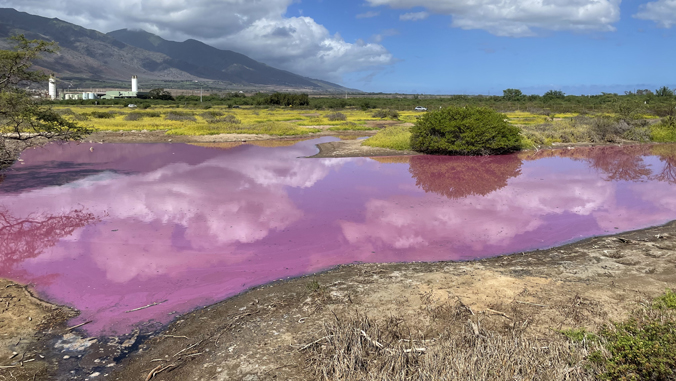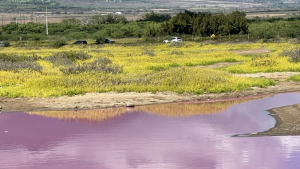
The bright pink water in a Maui pond that has caused surprise around the world appears to be caused by bacteria, not algae, according to preliminary findings by researchers at the University of Hawaiʻi at Mānoa.
The Hawaiʻi State Department of Health (DOH) Clean Water Branch sent samples of the pink water from Keālia Pond National Wildlife Refuge to UH Mānoa’s Water Resources Research Center (WRRC) for further analysis. The early findings have led the experts to suggest that halophilic (thriving in salt conditions) prokaryotes, also known as archaea and bacteria, were likely the cause of the brightly colored water.

WRRC Associate Researcher Marek Kirs is leading UH’s research effort, alongside School of Life Sciences Professor Stuart Donachie. Kirs and Donachie are currently working to isolate and identify the type of halophilic prokaryotes.
Kirs said that he has no knowledge of something like this happening before in Hawaiʻi, and suggested that extended dry weather conditions contributed to this occurrence.
“According to the U.S. Fish and Wildlife Service, the sand plug between the pond and the ocean washed away during the wet season,” Kirs said. “This has not happened at least since 2018. I believe that evaporation, combined with limited freshwater input, has increased the salinity (to twice the salinity of the ocean water). It could happen in similar situations.”
The U.S. Fish and Wildlife Service, which manages the refuge, has been monitoring the water since first discovering the pink color on October 30. It has been working with the Hawaiʻi State Department of Aquatic Resources and DOH to identify what is causing it, and to determine a course of action.
The U.S. Fish and Wildlife Service recommends that people keep a safe distance, do not enter the water, do not consume any fish from the water, and ensure that pets don’t drink the water.


